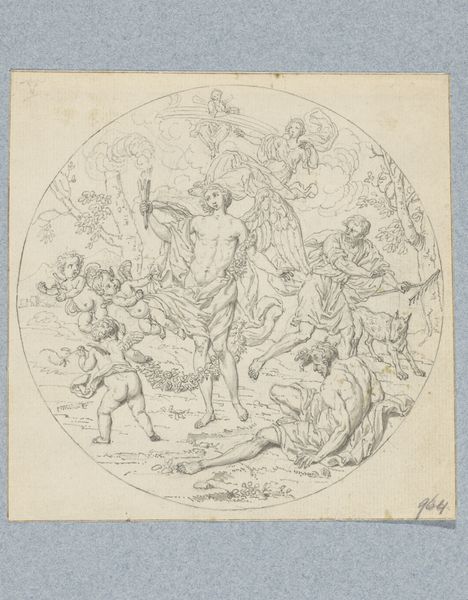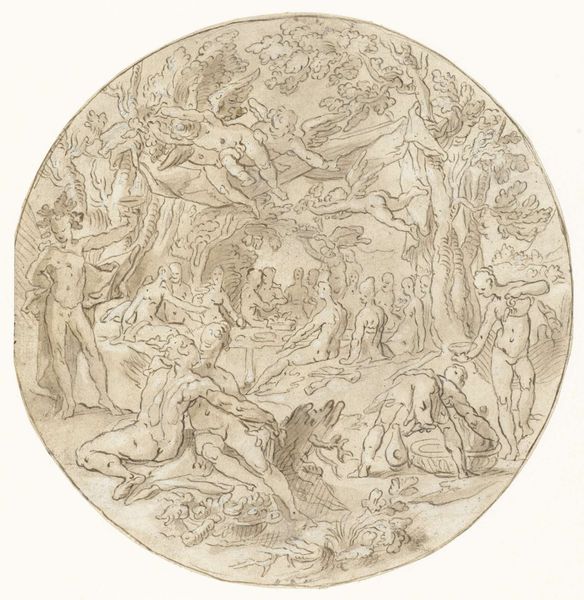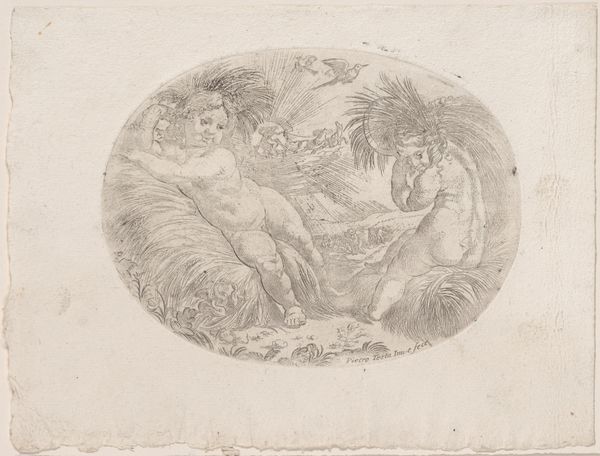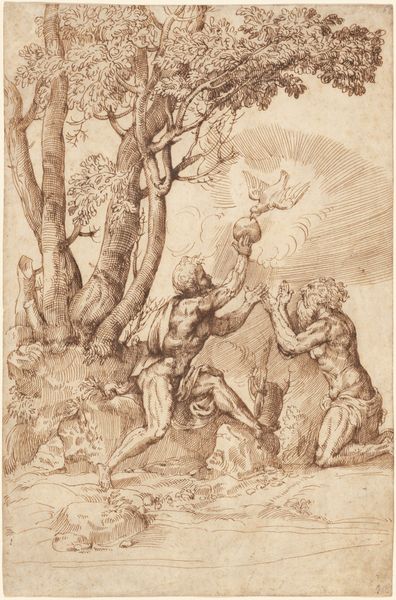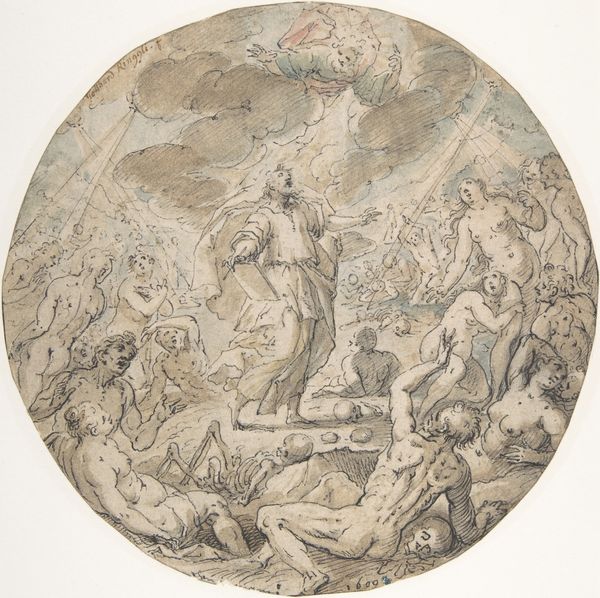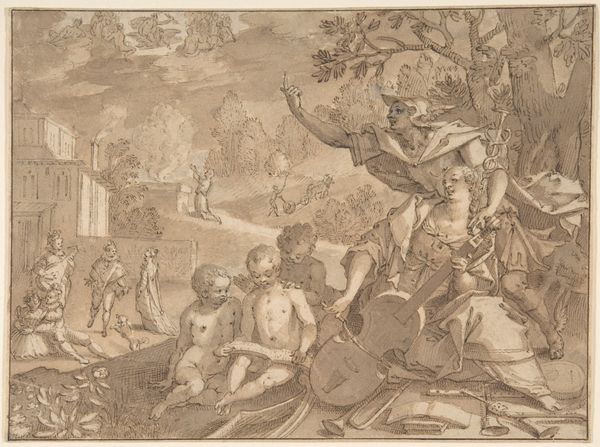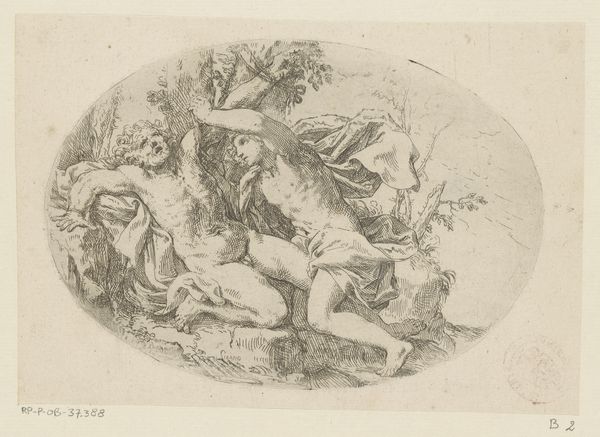
drawing, ink, pen
#
drawing
#
toned paper
#
light pencil work
#
pen sketch
#
pencil sketch
#
mannerism
#
figuration
#
personal sketchbook
#
ink
#
ink drawing experimentation
#
pen-ink sketch
#
pen work
#
sketchbook drawing
#
pen
#
history-painting
#
nude
#
sketchbook art
Dimensions: height 212 mm, width 198 mm
Copyright: Rijks Museum: Open Domain
Curator: What a delicate and emotionally charged scene depicted in this 1576 ink drawing. It's called "Diana Discovers Callisto's Pregnancy" by Joachim Wtewael, currently housed at the Rijksmuseum. Editor: My immediate impression is that the use of pen and ink brings a sense of raw vulnerability to this mythological scene. It feels intimate, almost like peering into a private moment of betrayal. Curator: Indeed. Wtewael captures a pivotal moment in Ovid’s Metamorphoses. We see Diana, goddess of the hunt and chastity, confronting Callisto, one of her nymphs, whose pregnancy, fathered by Zeus, is now revealed. The visual language speaks volumes; it reflects a deep seated anxiety around the loss of bodily autonomy. Editor: The grouping of figures amplifies the drama. Notice the positioning of Diana, standing tall and accusing, while Callisto cowers amidst her companions. It calls to mind the symbolism of Artemis and her sacred groves, emphasizing their historical role for the women. The tonal paper accentuates their nakedness. The circular composition also seems relevant. Curator: Absolutely. It emphasizes the communal aspect of this discovery within a group of women bound by their vows to Diana, now confronted with a visible transgression. This betrayal speaks volumes about the societal constraints and the limited agency women held, not just within mythology, but mirroring real historical dynamics. Callisto is not just being exposed for her individual action; she's threatening the structure of their entire community. Editor: Right, and think about the presence of the hunting dogs! They act as classical symbols of both Diana’s purity but they also highlight the impending violence and Callisto’s eventual transformation. The scene reflects both the fear of divine retribution and the societal price paid by women who deviate from expectations. Curator: What's so remarkable about Wtewael's approach is how he distills the myth’s complex layers into such a potent and concentrated scene, triggering us to ponder how narratives around female sexuality and consequence echo across time and cultural contexts. Editor: I find myself lingering on the gazes, imagining all the visual narratives the image evokes regarding judgement and exile through the depiction of myth. It reminds us to examine symbols of antiquity with our current understanding.
Comments
No comments
Be the first to comment and join the conversation on the ultimate creative platform.
